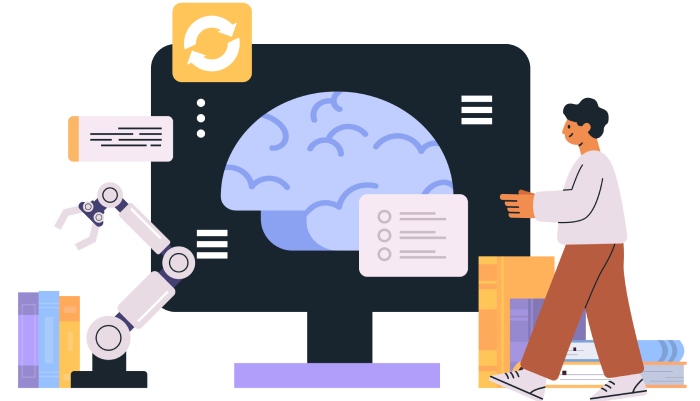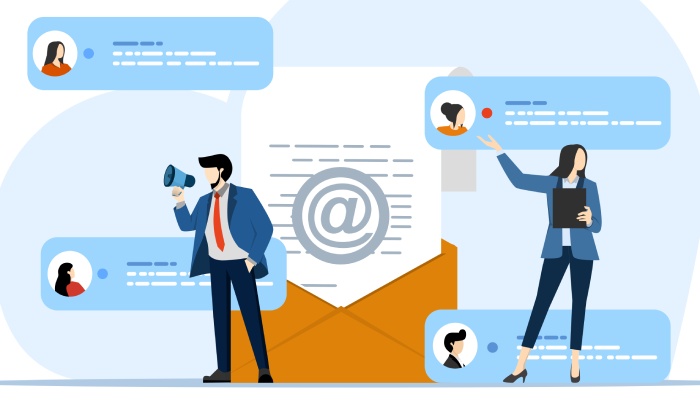The earlier model of Email Marketing was that of one mail being sent to a large group of people. It relied too much on luck and probability, and people did not think much about how it could influence the receiver. However, with the entry of AI into the scene, the game has changed. It now gives marketers a better chance of influencing the target through better personalization and reducing overall efforts with various tools.
From Blind Lists To Personalization
One of the essential advantages AI has provided is getting rid of the idea of listing. The list of names to mail used to be the singular most important weapon for the online marketer. And organizations would plan their annual marketing budgets based on such lists. However, AI has proved that the list is no more relevant. It now has a better basket and calls it data. Organizations are no longer stuck with the outdated mindset of composing one email and sending it to all, creating an idea of monotony.
The information that is gleaned through AI will now suggest how and on what to concentrate. Focus areas have been narrowed to the essentials, and Email Marketing has ceased to be a chore. AI content has become a game-changer in the realm of email marketing, reshaping the traditional landscape. It helps humanize email content by making it more relevant, context-driven, and personal. Explore how it is revolutionizing email marketing strategies, and enhancing personalization and engagement like never before.
The Introduction Of Analytics And Machine Learning
Every organization worth its salt invests in email security and anti-phishing services. The outbound SMTP server is configured to facilitate monitoring and identifying unnecessary emails and can be potentially dangerous. Hence, it becomes quite a task for marketers to make themselves heard. Here becomes relevant the two most essential inventions of the 21st century: Machine Learning and Data Analytics.
Machine Learning (ML)
One of the benefits of AI is collecting seemingly mundane information that eventually turns out to be gold. Machine Learning (ML), a branch of knowledge closely associated with AI, helps marketers understand email marketing and improve their email deliverability. One of them being STO or ‘Send Time Optimization.’ It is the time that the potential receiver will be opening his or her mailbox and going through the emails. One can customize it as per the email reading patterns of the target. What STO does is lower the probability of the email remaining unread for a long time.
Machine Learning also helps in building segments for campaigns. Each community of people is disparate by nature and making tailor-made campaigns is the need of the hour. Segmentation is a challenging task for any marketer, and AI does that handily. With custom AI development, segments can be tailored more precisely, taking into account demographics, economic structures, age, gender, and other diverse factors. It is also vital for the personalization of emails. The data collected based on the purchasing history and interests of customers assists marketers in building focussed stories.
Data Analytics
Content creation is one of the most creative tasks for the marketer. They spend hours on visualizing possibilities that would move the receiver enough to become a buyer. Analytics assists marketers in creating the most plausible subject lines and content that will resonate. They also have to be safe enough for the system not to take it as spear phishing since organizations do invest in phishing protection. The presence of additional tools like ransomware protection makes it an even tighter line to walk.
Analytics will be able to do data profiling based on the personal interests of the target. The content can then take form accordingly. Marketers are also aware of email archiving and email forwarding pitfalls, especially when the objective is a conversion by turning a recipient into a potential customer.
Advantages Of Artificial Intelligence (AI) For Email Marketing
The advantages organizations can gain by using AI as a tool for email marketing can be summarised as below:
- Automation
The email-sending part is a mundane task, and one can use resources better rather than spending hours delivering emails to different people. With automation, one can schedule emails to ensure that the system will send them at the specified date and time. One can also set up automated campaigns accordingly.
- Personalization
Emails need not be the same bulk messages sent out to a large group of people. Each email has to make sense and appropriately address the recipient to have a return on effort. The ROI (Return On Investment) is a must when it comes to marketing for results. Categorization, as mentioned before, is a challenging task, but AI has made it easy. That’s where an AI email generator comes in handy, helping marketers craft messages that feel more thoughtful and relevant instead of just another generic blast.
- Discovery
AI also helps in identifying the newer avenues that might have missed the eyes of the marketer. Segments can include demographics, economic structures, age, and gender. It can be based on diverse factors such as geographical locations and spending rates. This vast data set is collected and analyzed through AI and provided in a structured format to the user.
- Trend Sorting
Trend sorting is a part of discovery or segmentation and essential for creating groups. The most popular trends are the ones that are going to garner the most eyeballs. With AI, spotting the trends will be an easier task.
Final Words
Despite the rise of video communication tools, email still rules the roost. Email marketing has remained dominant for a long time and has gotten better with MX backups and various assisting tools. With the transforming facets of technology and change in consumer tastes, the current times are witnessing new and advanced email marketing trends. And AI is at the forefront, promising not only to drastically reduce overall effort but also to maximize returns.


